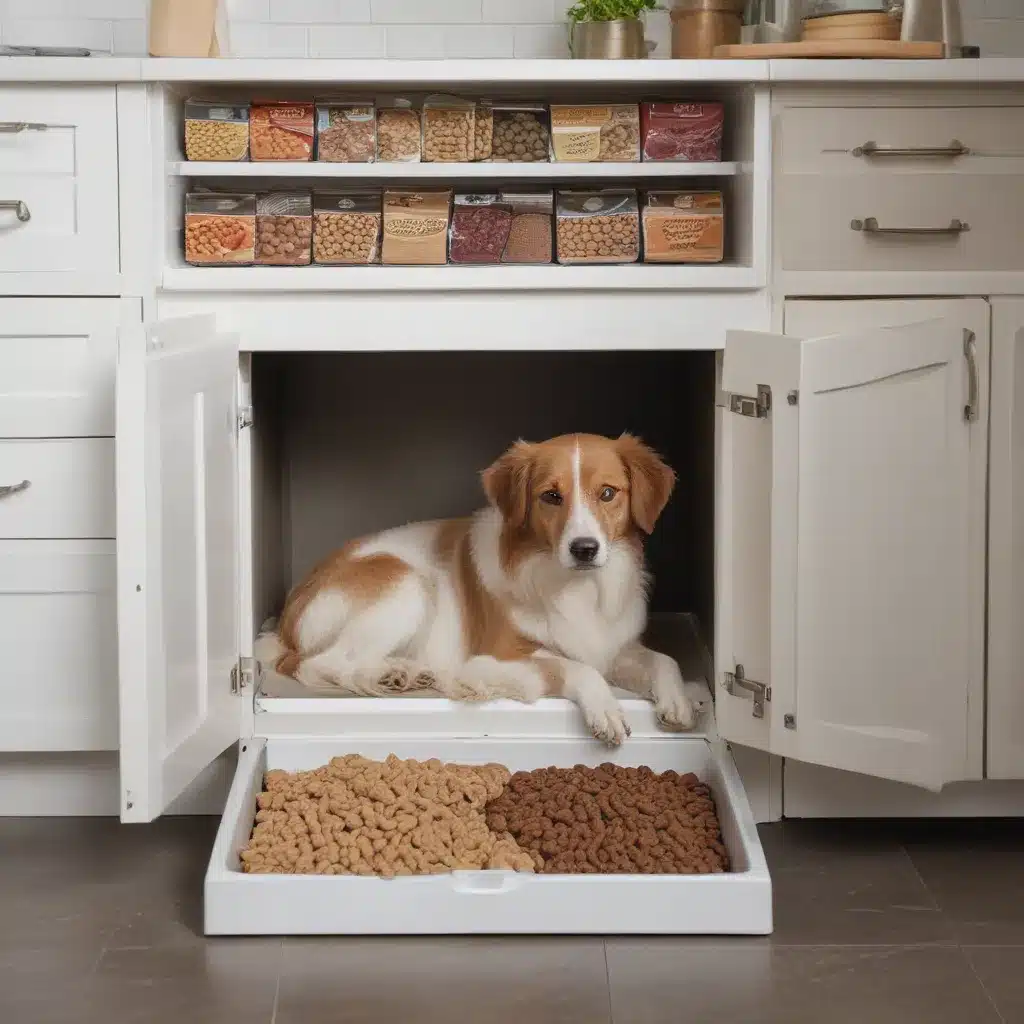
Keeping Your Furry Friend’s Chow Fresh and Furrific
You know the feeling – you just opened a brand new bag of your pup’s favorite kibble, only to find it’s gone stale and not-so-delicious a few weeks later. Or maybe you’ve got a half-eaten can of wet food in the fridge, and you’re wondering if it’s still safe for Fido to chow down. Fear not, my fellow dog lovers! I’m here to share my top tips and tricks for properly storing your canine’s cuisine, so you can keep them happy, healthy, and eating like the kings and queens they are.
Dry Food Storage: Keeping It Crisp
When it comes to dry dog food, the key is to create an environment that’s cool, dry, and air-tight. That means no storing it in the garage, the attic, or anywhere else that might get a little toasty. The ideal temperature range is under 100°F (38°C), so your kitchen or pantry is usually a safe bet.
Studies by the pet food experts at Hill’s have shown that plastic containers, zip-top bags, and even those handy kitchen canisters can actually impart funky smells and flavors to your pup’s dry chow. The best way to keep it fresh? Leave it in the original bag, folded over tightly, and stash it in an airtight bin or container. This helps preserve that all-important fat barrier that protects the food’s taste and nutrition.
Wet Food Storage: Fridge-Friendly Feasting
Now, let’s talk about those canned and pouch wet foods. The fridge is your best friend here, my friends. As the kind Redditors have advised, an opened can or pouch of wet dog food should be stored in the refrigerator to keep it moist and fresh. The best way to do this is by using a plastic pet food lid that’s designed to fit right on top of the can. If you don’t have one of those handy lids, no worries – good ol’ plastic wrap or a zip-top bag will also do the trick.
And remember, once that can or pouch is open, you’ve only got about 3-4 days before the food starts to go funky. So be sure to finish it up within that window, or toss what’s left. We don’t want Fido getting a tummy ache from spoiled grub!
Sniff Test: When In Doubt, Throw It Out
Of course, even with the best storage methods, sometimes our dog’s food just doesn’t pass the smell test. If you notice a sour, rancid, or generally unpleasant odor, or if the food seems moldy or discolored, it’s best to play it safe and toss it. The experts at Pedigree also recommend keeping an eye out for any changes in your pup’s stool or appetite – those could be signs that something’s amiss with their chow.
And let’s not forget the expiration date! Always check the “Best Before” label, whether you’re dealing with dry or wet food. Once that date has passed, it’s time to swap in some fresh stuff, no matter how well you’ve stored it.
The Feeding Bowl: A Clean Slate
Last but not least, don’t forget about your pup’s actual feeding bowl. Whether it’s dry or wet food, you’ll want to make sure that bowl is clean and dry before each meal. A quick wash with some warm, soapy water will do the trick, and you can even pop it in the dishwasher for a thorough sanitizing.
By following these simple storage and serving tips, you can rest assured that your furry friend is getting the freshest, most delicious meals possible. And who knows, maybe they’ll even share a few kisses and tail wags as a thank-you!
For more helpful dog care advice, be sure to check out the rest of the articles on ihavedogs.com. Happy (and safe) eating, pup parents!

